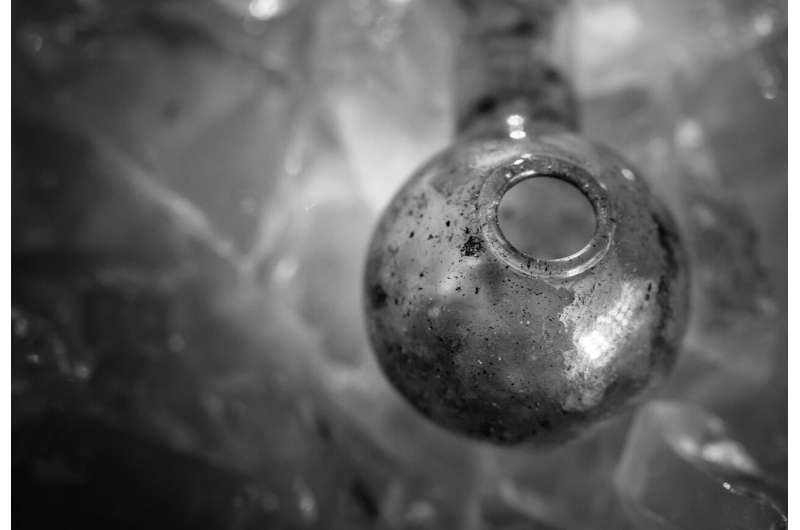This article has been reviewed according to Science X's editorial process and policies. Editors have highlighted the following attributes while ensuring the content's credibility:
fact-checked
trusted source
written by researcher(s)
proofread
Meth use is declining in Australia—but the public still sees it as the most worrying drug

Methamphetamine, also known as ice or meth, is the drug Australians most associate with a drug problem and the drug they're most concerned about, according to the latest National Drug Strategy Household Survey.
Yet the survey, released today, shows recent use of methamphetamine has been declining. It's at its lowest in more than a decade, with 1% of Australians using methamphetamine in the past 12 months.
So why are Australians still worried about this drug, and why does it matter?
There's a global trend in viewing drug use as a health rather than criminal justice issue. The Australian Capital Territory recently decriminalized methamphetamine and a range of other illicit drugs for personal use. Other states are considering whether to take this step, which means the public's opinion is increasingly important.
Let's take a look at the reasons why some drugs are viewed more negatively than others (such as alcohol and cannabis). We know it's not always to do with the level of harm they cause.
How do we develop attitudes about drugs?
Messages conveyed by news media and government advertising affect public beliefs and attitudes about many important social and health issues including alcohol and other drugs.
Media reports about drug use tend to focus on the negative aspects of illicit drugs rather than presenting it as a health or social issue. People who use methamphetamine are framed as criminal, deviant or dangerous. A review of articles in print media found stories about methamphetamine were disproportionately focused on crime or justice-related topics.
Methamphetamine use, especially the use of the crystal form (ice), has been called a "crisis" and an "epidemic".
Interaction with people who have experience of drug use has been shown to decrease stigmatizing attitudes, but with such a low rate of use, most Australians wouldn't know anyone who uses methamphetamine.
As a result, many Australians hold misconceptions about methamphetamine and its effects. A survey of 2,108 Australians found more than half (57.4%) thought methamphetamine was the most popular illicit drug in Australia and one-quarter (25.5%) believed most teenagers had used methamphetamine.
But methamphetamine use is low compared with other drugs such as cannabis (11.5%), cocaine (4.5%) and ecstasy (2.1%). The most commonly used drugs among young people are alcohol, cannabis and cocaine.
Methamphetamine use has short-term effects including increasing heart rate and body temperature, disrupting sleep, and making you feel alert or agitated. Long-term use of methamphetamine can lead to heart or lung problems, exhaustion and dependence. But most people who try methamphetamine don't go on to use it regularly.
The National Drug Strategy Household Survey also found Australians in poorer areas were more likely to have used crystal methamphetamine, while those in wealthier areas were more likely to use its powdered form, or speed.
Why do attitudes to illicit drugs need to change?
Negative attitudes lead to stigma, isolation and unfair treatment of people who use drugs, and their friends and family.
Stigma toward people who use crystal methamphetamine is common in Australia, with one in three people who use crystal methamphetamine reporting they have felt discriminated against by other people (for example, community members or health workers) because of their drug use.
Stigma leads to psychological distress for people who use drugs and has been linked with low self-worth and shame. We know stigma is a barrier to help-seeking and treatment. This can make the problem worse because people who need help aren't able to get it, and continue to use drugs. According to one participant in a study by Cracks in the Ice, "There's this big stigma around drug use, especially with crystal methamphetamine. Because of that, you tend to hide a lot of what you're going through."
Reducing stigma is important as often the sooner someone gets help, the better the outcome is and the better for the community (for example, less absences from work, less crime, and fewer visits to health care). The harms and costs of drug use are higher for people dependent on drugs.
So, what can we do to change people's attitudes?
We know accurate information improves knowledge and understanding, and can lead to more empathetic attitudes.
A number of free evidence-based resources are available for all Australians, such as the Cracks in the Ice toolkit. When it was evaluated, people who visited the website knew more about crystal methamphetamine and held less negative or stigmatizing attitudes towards people who use it.
The media also have an important role to play by not sensationalizing drug use. Guidelines such as those from Mindframe set out advice for accurate and non-stigmatizing reporting on suicide, mental health and alcohol and other drugs.
These include Mindframe guidelines specifically developed for methamphetamine reporting. Using Mindframe guidelines has been shown to be effective in improving media reporting.
Similarly, AOD Media Watch highlights examples of good and stigmatizing reporting in the media.
Language is really important in reducing stigma. If we talk about drugs openly, focusing on health and well-being rather than crime, it provides better support for people to make informed decisions and improves access to help when people need it. This in turn helps reduce the problems associated with methamphetamine and other drugs.
This article is republished from The Conversation under a Creative Commons license. Read the original article.![]()




















